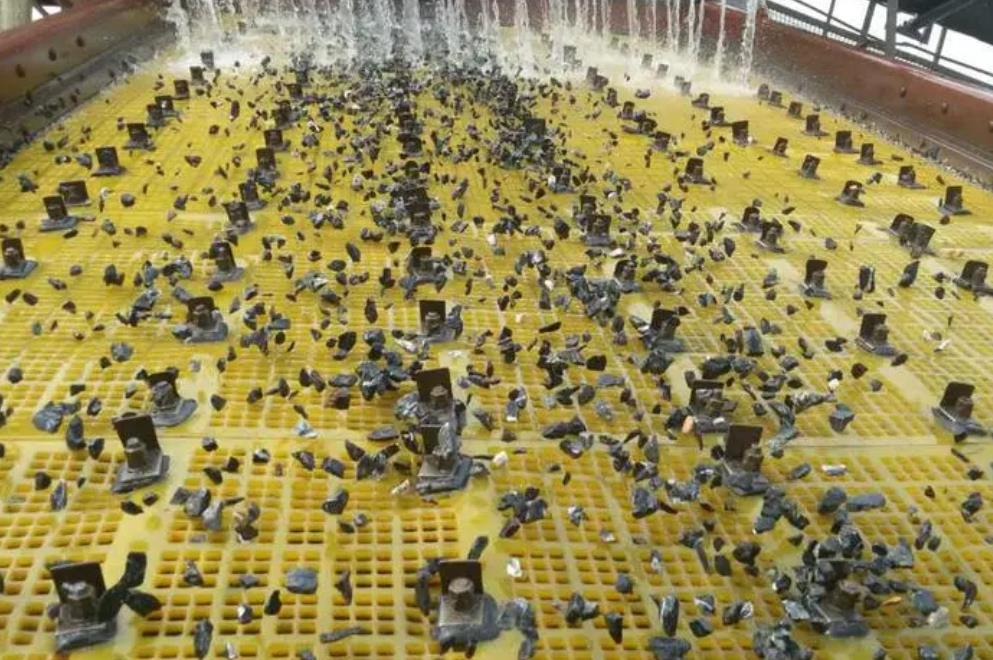Factors affecting the use of polyurethane screens
The service life of polyurethane screens is affected, and its screening effect and impact resistance are damaged After all, polyurethane screens are the main equipment that cannot be lacking in mineral processing and grading operations
The service life of polyurethane screens is affected, and its screening effect and impact resistance are damaged. After all, polyurethane screens are the main equipment that cannot be lacking in mineral processing and grading operations. Factors that affect its service life must be avoided as much as possible during use, otherwise the performance of the affected equipment will decline.

1. Inappropriate selection
1. According to the purpose, it can be divided into dewatering screens, de-mediation screens and material grading screens;
2. According to the raw material components used, it can be divided into polyester or polyether screens;
3. According to the fixing method on the vibrating screen, it can be divided into buckling type, bolt type and tensioning type screens. The choice of polyurethane screens should be based on the purpose of the screens, mainly whether the screens are used for grading or dehydration. The screen materials used for wet screening and dry screening are different. Polyether polyurethane screens should be used for water screening to avoid the phenomenon of shortened screen life due to hydrolysis. Polyester polyurethane screens should be used for dry screening and screening of bulk materials. They have good wear resistance and impact resistance, which can effectively improve the life of the screen. The installation structure of the screen should also be selected according to the size of the screen aperture. For large-aperture screens (apertures above 60mm are recommended), bolt-type fixing structures are recommended, because large-aperture screens handle larger materials and have a greater impact on the screen surface. Other structural screen fixing methods are prone to loosening. After the screen is loose, it will hit the support beam, resulting in a shortened screen life.
2. Unreasonable use
After using the correct polyurethane screen, it is necessary to use it reasonably to ensure that the performance of the polyurethane screen is good and the life can be guaranteed. However, many users tend to ignore this point when using polyurethane screens. For example, the tensioned screen is easily loosened by large pieces of material during use, and the tension bolts need to be tightened regularly. If the tension bolts are loose and not tightened for a long time, the screen and the support ribs will hit each other, affecting the life of the screen. At the same time, there is a feeding port design. It is recommended that the feeding method should not be vertical to the screen surface. The feeding direction should be at an angle along the logistics direction, and the feeding height should not exceed 400mm to avoid excessive impact force and damage to the screen. For complex working environments, the surface of the metal skeleton should be sandblasted to remove oil and rust stains on the surface, activate the surface, and expand the bonding area. After the steel mold is demolded (coated with a release agent), the metal skeleton is placed in the platform. The temperature rises to 110°C and the mold temperature is around 80°C. Before pouring, the polyurethane screen should be properly treated with the corresponding mold and skeleton. Whether it is the temperature or the oil stains on the surface of the skeleton, they should be treated accordingly. If the surface oil stains are not properly treated, it will affect the adhesion between the skeleton and the polyurethane, and it is easy to fall off. If the temperature control is unreasonable, it will cause bubbles or burns during pouring, which will affect the life of the polyurethane screen.
The above are the factors that affect the life of the polyurethane screen. We all know that when the life is affected, the performance of the product is not as good as before. Moreover, once there is a problem with the use of the polyurethane screen, it will hinder the use of the project.



